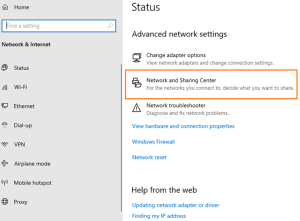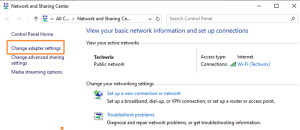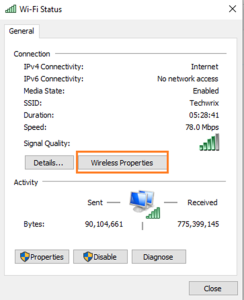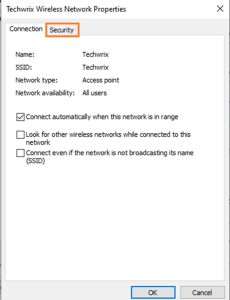Key Points
- WPA2 passwords act as the key to encrypt and protect Wi-Fi traffic, preventing unauthorized access and data theft.
- Strong WPA2 security requires long, complex, and unique passphrases, with WPA2-Personal using a shared key and WPA2-Enterprise offering individual authentication.
- SecureW2 simplifies WPA2-Enterprise adoption with dynamic PKI and Cloud RADIUS, enabling passwordless authentication and stronger network security
When you try to connect to a Wi-Fi network and are asked for a password, do you ever find it hard to figure out what to do? You’re not by yourself. These days, having access to the internet is as important as having electricity, so it’s important to know the basics of Wi-Fi security protocols. You may have heard of the WPA2 password when you set up or join a Wi-Fi network. It is the most important part of this security. But what is a WPA2 password, and why is it important for your online privacy and safety?
This blog examines the complexity and importance of a WPA2 password. We’ll discuss how it works, why it’s important for the security of your wireless network, and the best ways to make and keep a strong WPA2 password.
Understanding what your WPA2 password does is an important step, whether setting up a new home network or trying to make your current Wi-Fi more secure.
What’s a WPA2 Password?
WPA2, or Wi-Fi Protected Access 2, is a Wi-FI security protocol that works like a high-tech lock. A strong WPA2 password protects the data going through your Wi-Fi network like a key protects your home. When you encrypt data, you can’t read it without the WPA2 password, which is also the decryption key.
Imagine sending a highly confidential message to a friend. You wouldn’t just write it out in plain language, would you? You would instead use a special code that only your friend can understand. WPA2’s stronger encryption protects your online activities and data from unauthorized access with a strong password as the first line of defense. It prevents neighbors, hackers, or anyone else from snooping on your internet traffic or, even worse, hijacking your internet connection for malicious purposes.
WPA2 Password Requirements
Unlike some security protocols with strict character requirements, WPA2 offers a bit more flexibility. However, there are still some key guidelines to follow for Wi-Fi security.
- Minimum Length: While the technical minimum length is 8 characters, experts strongly advise going beyond that. Aim for at least 16 characters, making it significantly harder for hackers to crack your computer, laptop, or mobile password.
- Character Variety: To ensure the security of your accounts, you must create a complex password. Avoid using simple words or phrases.
- Avoid Personal Information: Don’t use your personal information like names, addresses, birthdays, or any other personal information. Hackers can use social engineering tactics to guess passwords based on these details.
- Ditch the Dictionary and Avoid Repetition: It’s best to avoid using dictionary words or words spelled backward as passwords, as hackers can easily access databases containing common words and their variations. Instead, it’s recommended to use nonsensical combinations that are unlikely to appear in a dictionary. Additionally, avoid repetitive patterns such as sequences of numbers or alternating letters and numbers.
Where Do I Find My WPA2 Password?
In Windows or Mac, you can find it by using a few steps that vary based on your operating system. In our case, we’ll try to find our password in the Windows environment. To find your WPA2 password in Windows, right-click on the Wi-Fi icon in the bottom right corner of your windows, and click on “Open Network & Internet Setting”. Click on “Network and Sharing Center”.

Click on “Change Adapter Settings”.

Click on your Wi-Fi network.

Double-click on it and then click on “Wireless Properties”.

Click on the “Security” tab from a new window and find a network name if it exists.

Tick the checkbox next to “Show Characters”. It’ll show you your network security key.
How Many Characters Are Allowed in a WPA2 Password?
WPA2 passwords allow for a range of characters between 8 and 63 characters. It’s important to note that while the technical specification allows for this range, security best practices recommend using a longer password for better protection.
WPA2 Personal AES
WPA2 Personal AES (Advanced Encryption Standard) scrambles the data transmitted over your wireless networks. Without the decryption key, no one else can read it.
Encryption Key
When you connect a device to your wireless network using the correct WPA2 password, the AES algorithm offers its services and support. It transforms the plain text data you send and receives (emails, web browsing information, etc.) into an unintelligible cipher.
Decryption Key
The decryption key is the correct WPA2 password that can unlock this scrambled data and turn it back into its original form. In this way, even if someone steals the data that’s going through your Wi-Fi network, they won’t be able to read it without the key.
Wi-Fi Protected Access Pre-Shared Key
Wi-Fi Protected Access Pre-Shared Key, commonly known as WPA2-PSK, is a mode of operation within the WPA2 security framework. It is widely used in home and small business WiFi networks due to its simplicity and effectiveness.
WPA2-PSK relies on a pre-shared key, also known as a shared secret, which is essentially a secret passphrase that you (the network administrator) create and share with all authorized devices that need to connect to your Wi-Fi. This passphrase serves as the master key that unlocks the encryption provided by WPA2 Personal AES.
Unlike some enterprise-level Wi-Fi setups that require individual user accounts and complex authentication processes, WPA2-PSK allows you to manage your network with a single passphrase. This simplifies setup and device connection, especially for guests or multiple family members.
However, it’s crucial to remember that the strength of your WPA2-PSK directly impacts your network’s security. Hackers can figure out a weak passphrase, which could put your whole network at risk.
FAQs
What is a WPA2-Personal AES?
WPA2-Personal AES (Advanced Encryption Standard) is a combination of two technologies that work together to secure your home or small business Wi-Fi network:
- WPA2 (Wi-Fi Protected Access 2): This is a security protocol that acts like a lock on your home network door. It requires devices to have the correct password (WPA2 password) to connect and access the network.
- AES (Advanced Encryption Standard): This is a powerful encryption method that scrambles the data transmitted over your home network. It essentially turns plain text information (emails, browsing data, etc.) into an unreadable code. Only devices with the correct decryption key (your WPA2 password) can unlock this scrambled data and convert it back to its original form.
What is The Difference Between WPA2-Personal and Enterprise AES?
Both WPA2-Personal AES and WPA2-Enterprise AES utilize the strong AES for data protection. However, they differ in their approach to user authentication, making them suitable for different environments:
WPA2-Personal AES
- Designed for Homes and Small Businesses: This is the most common method used in homes and small offices due to its simplicity.
- Single Pre-Shared Key (PSK): Everyone connecting to the public network uses the same WPA2 password (PSK), which is the shared key to unlock the AES encryption.
WPA2-Enterprise AES
- Designed for Large Organizations: This method is typically used in businesses, schools, or other organizations with many users and a greater need for network security.
- Individual User Authentication: Each user has their own unique login credentials (username and password) for accessing the network.
- RADIUS Server: An authentication server (RADIUS server) handles user authentication, When you try to connect to Wi-Fi networks, your device (RADIUS client) sends your login info to the authentication server for verification. The RADIUS server checks a central database to see if you’re approved, then tells your device thumbs up or down for access.
Should I Use WPA2 AES or WPA3?
WPA3 offers the strongest security! While WPA2-AES is good, WPA3 is the newer standard with improved encryption for better protection. If your router settings support WPA3, choose that for optimal Wi-Fi security.
What is a Pre-Shared Key For a VPN?
A pre-shared key (PSK) for VPNs is like a shared Wi-Fi password. It unlocks the VPN network for your device but is easier to crack than more secure certificate methods. Best for personal use or small businesses.
Elevate Your Wi-Fi Security with WPA2-Enterprise
For networks of all sizes, WPA2-Enterprise represents the highest level of security, with strong encryption and authentication. However, WPA2-Enterprise network configuration and management have always been difficult and time-consuming – especially if you consider using certificate-based authentication for your network instead of individual passwords. That’s where SecureW2 comes in, providing simplified solutions for passwordless WPA2-Enterprise network implementation and maintenance. Without the hassle of manual deployment, organizations can easily adopt the gold wireless security standard with our managed PKI and Cloud RADIUS service.
Our passwordless authentication platform offers enterprises looking to strengthen their networks with WPA2-Enterprise encryption a turnkey solution. Whether you are an experienced IT professional or a novice configuring a wireless network, our platform provides easy management and integration, guaranteeing simple authorization and authentication for any device connected. Organizations can confidently increase their Wi-Fi security by utilizing SecureW2’s experience and cutting-edge technology, knowing the strongest safety protocols to protect their network.